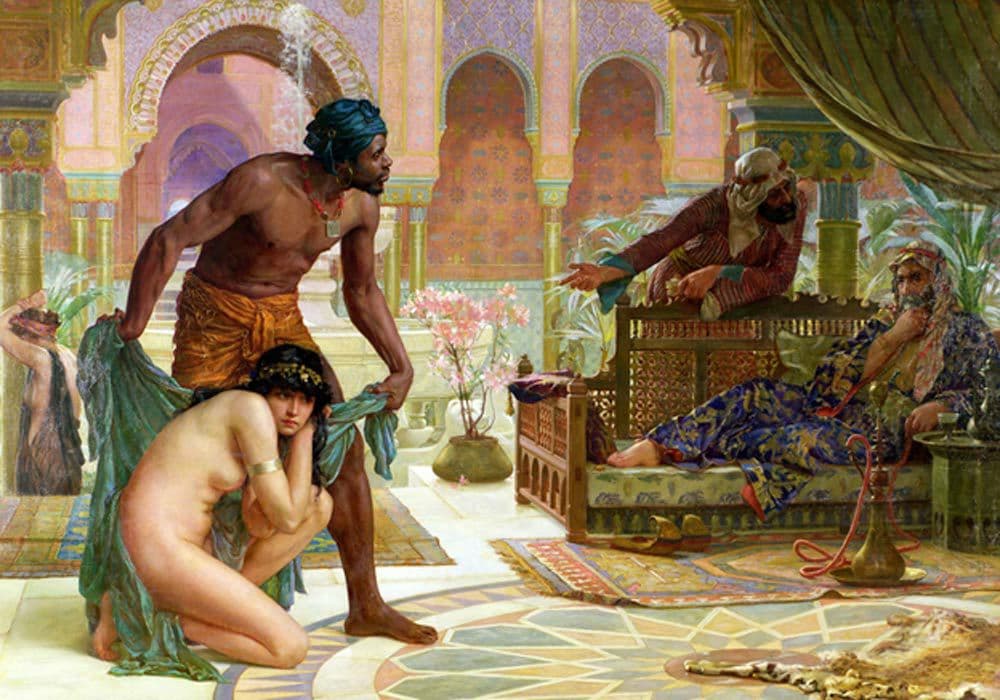Introduction
Most of us have learnt about African slavery by the expanding European colonies, but there are few to none who truly understand European slavery by the Africans and Muslims. When our Western education systems teach us about the topic of slavery, the history, is entirely focused upon the slave trade of Africans, and we indulge in this orgy-like festival of guilt for a trade that happened one time or another worldwide whether it was by means of enslaving their own inhabitants, or inhabitants of foreign lands.
This slave trade by the Africans was not just particularly orchestrated by Sub-Saharan Africans as you probably think, but also by the Muslims of North Africa and in Ottoman territories too. Although we recognize that we, as Europeans, had a history of slavery across the world, we should also recognize that these countries that Europeans dealt with in slaves themselves.
Slavery is no rarity - it has always been a highly profitable trade for anyone who had the money for it. In this post, I will look to expand upon the European slaves in Africa to help people understand that we were also slaves once upon a time too.
An overview of whites in African slavery
In the 20th century, it was believed that the numbers of European slaves in African were minimal - namely only in the thousands. But with further conducted research by independent researchers and universities, and in broader time perspective, that number has suddenly reached the millions. One university professor named Robert Davis of Ohio State University, conducted his own research and methodology to reach the conclusion that between 1 million to 1 and a 1/2 million white Christian Europeans were slaves working in forced labour, or under conditions of sex trafficking in North Africa alone.
“Much of what has been written gives the impression that there were not as many slaves and minimizes the impact that slavery had on Europe,” Prof. Davis said. “Most accounts only look at slavery in one place, or only for a short period of time. But when you take a broader, longer view, the massive scope of this slavery and its powerful impact become clear.”
It is also useful to compare this European slave trade to the Atlantic slave trade. Over a period of 4 centuries, the Atlantic slave trade roughly traded 10-12 million African slaves, whereas the Europeans slave trade, like I mentioned before, traded 1 to 1 and a 1/2 million slaves within one and a half centuries. It is believed that between the periods of the 16th and 17th centuries, more whites were enslaved in Africa than Blacks in the entire Americas.

The Barbary coasts
“When we had arrived in Cork, I made a request to Lord Inchaquoin to give me a passport for England. I took a boat to Youghal and then embarked on the vessel John Filmer, which set sail with 120 passengers,” stated Reverend Devereux Spratt in 1641, “but before we had lost sight of land, we were captured by Algerian pirates, who put all of us in irons.” The enslavement of Europeans was taking place mostly along the Barbery coats in North Africa. Coisars were often attacking the coasts of Mediterranean lands reaching as far north as England and Ireland and in minimal cases, up into Scandinavia and east to the Slavic lands. In England, the Coisars plundered British shipping at will, taking no fewer than the recorded 466 vessels between 1609 and 1616, with 27 more vessels near Plymouth in 1625. Later on in the 1600s, another printed list from London in 1682 showed that 160 British ships were captured by Algerians between 1677 and 1680. Considering the number of sailors who were taken with each ship which would be the likely case, these examples translate into a probably 7,000 to 9,000 able bodied British men and women taken into slavery in those years, disregarding the ones who could have died in conflict. The Africans, unlike the Europeans, were mostly pirates, and groups out for profit. On another note, we cannot forget that the involvement of this slave trade was not just specific to North Africa, but also to central Africa. Due to the rising powers of the European nations, African slaving was becoming harder to do and when the French secured the Barbary coasts in the 1800s as colonies, it was game over to the North Africans.
While they took gold, treasure, and merchandise when they could, the real booty of the North Africans was people. On one occasion, the Barbery pirates sailed away with the entire congregation of a Penzance church. When James I sent a fleet to demand the return of Christian captives, (which went unsuccessful), the horrified public learned that more than 25,000 White slaves were being held in the Barbary states. Popular pamphlets described the horrors awaiting the prisoners in detail. They ran particular riot over the fate of awaiting female captives, painting the unmentionable vices of the masters to whom these unfortunate women were forced to submit. But as far as we know, the truth was a little different from that. Although there is the natural occurrence of the odd rapes, the apparent good-looking European girls and women were prized commodities and were therefore, most of the time, carefully treated.
Their teeth and breasts were inspected and, sometimes, their virginity was established too because virgins were highly desirable and valuable. There was even one English woman who became the wife of a Sultan of Morocco, who was reserved from the spoils of the Barbary states. Saharan Africans also often earned spoils from the North Africans themselves. But with the rise of the Oman Sultanate, which was based in Zanzibar, Bantu slaves were taken too since they were in abundance, hardly fortified, and also the cheapest to buy.

The white slaves in the Ottoman lands
The slavery system in the Ottoman empire was undoubtedly not specific to White people alone, but also to the people from the North African lands, the Caucasus lands, and from the east of the Ottomans. I would however like to specifically focus on the Whites that were taken into slavery by the Muslims. The Ottoman slave system was a thriving trade in the culture and economy of its vast empire. The most common form of slavery were sex slaves. Naturally, this shouldn’t come as a surprise considering the history of the middle east with slaves. It wasn’t until late 1908 that slavery was starting to become a conscious practice that people were becoming aware of, yet sex slaves were still being sold without any complications. Young Boys between 8 and 20 years old were being taken from eastern and central Europe to be drafted into military service, specifically the Kapikulu (military unit of slaves). These young boys were also forced to convert to Islam since they were mostly Christians and were raised into Muslim-Ottoman culture. The most expensive slaves were those between 10 and 35 years of age, with the highest prices for European virgin girls between 13-25 years of age and then teenage boys. The cheaper slaves were those with disabilities and then the Black Saharan Africans were the cheapest. Polish historian Bohdan Branowski concluded that in the 17th century, the Polish-Lithuanian commonwealth (present day Poland, Ukraine and Belarus), lost an average of 20,000 people yearly to the Muslims and as many as 1 million on all the years combined from 1500 to 1644.



